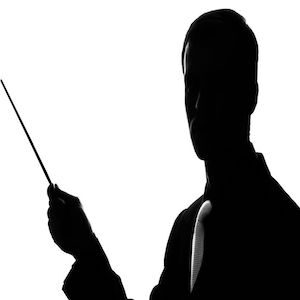By Dr. Ken Broda Bahm:

The idea is a merger of pop culture with academics. In pop culture, “truthiness” refers facetiously to the feeling of something being true, independent of its actual truth value (a term coined by late-night comedian, Stephen Colbert). Academics, however, have creatively adopted the term to describe the real phenomenon that occurs when message elements that are nonprobative are still able to add to the perceived truthfulness of a message. Instead of providing that full explanation whenever they talk about those elements, they simply refer to its truthiness. And what makes a message truthy? Pictures for one thing. I have previously written about the tendency for claims to be more likely to be believed when they are accompanied by a picture, even when the picture does nothing to add to the truth of the statement.
A number of studies have demonstrated the truthiness effect of images in a variety of contexts. Recent research (Derksen et al., 2020) however, applies it to witness testimony. The researchers conducted two experiments testing whether truthiness applies to judgments of witness credibility. They compared witness statements when they were, or were not, accompanied by a related but nonprobative photograph. In both studies, the witness was more credible when their testimony was accompanied by the image. In addition, they found that the photo seemed to be doing the work, because adding related but nonprobative written text had no such effect on witness credibility. The implication is that witnesses should think not just about their verbal testimony but also about whatever related imagery they might use, even if that imagery is just demonstrative and does not strictly add to the evidentiary support.
Use Images Whenever You Reasonably Can
I think attorneys and experienced witnesses will often ask themselves the question, “Do I need an image to explain this?” But the question really should be, “How can I work an image into this explanation?” The image will often help, even when it isn’t strictly or logically necessary.
If we are thinking only of the ability of an image to add material support for the testimony, then we are thinking too narrowly. Those who study the truthiness effect have come to the conclusion that the reason why it works is due to something called processing fluency: When a memory of testimony is accompanied by an additional memory of an image, then it is easier and more engaging to remember it. Because the information is processed a little differently when it is presented both visually and verbally, it feels more familiar to us when it is being recalled. Because we thought about it more when we heard it, it seems more like our own knowledge. So, egocentrically, we also think it is more likely be true.
This truthiness effect applies most naturally to an expert witness, but the fact witness walking through a complex timeline or a detailed set of documents could also benefit. Using designed demonstratives, models, flip charts, or slides, you can take dry testimony and make it visual.
Turn Your Testimony into a Show and Tell
Our own research has shown that, in a legal context, continually engaging both the verbal and visual modes of communication helps your audience understand and retain information, while also adding to the speaker’s credibility.
So one great solution is to have your expert witness, or your detailed fact witness, sit down with a graphic designer to create a slide show to complement the testimony. Based on this research, presentations using a single idea and image on a slide (rather than a series of bullet points) seem like the right way to go. Each image considered on its own might not be probative, but on the whole, the standard ought to be whether it assists the witness in testifying.
So when the time comes, it is helpful in direct examination to set up this kind of exchange with the witness:
Attorney: I understand that you prepared some slides that would assist you with this part of the testimony?
Witness: Yes, I did. I thought it would be more clear and interesting for the jury as well.
Attorney: And this will assist you in conveying your testimony?
Witness: Yes, it will.
Attorney: Your honor, with your permission, I am going to hand the witness the clicker and I will continue asking questions while the witness is able to use slides from the presentation.
Of course, it is important that this remain a question-and-answer presentation. Not only does that prevent a “narrative” objection, but it also creates more of a conversation and allows the attorney to be the “voice of the jury” in asking for clarification and in sharing what might be on their minds.
It takes some practice to do it smoothly, but when it works, the visual element definitely makes for more effective, more memorable, and more truthy testimony.
_
______
Other Posts on Using Courtroom Visuals:
- Visualize Damages
- Learn Visual Storytelling from the Second Impeachment Trial’s “Day in the Life” Video
- Use Physical Exhibits: Be 3-D
Derksen, D. G., Giroux, M. E., Connolly, D. A., Newman, E. J., & Bernstein, D. M. (2020). Truthiness and law: Nonprobative photos bias perceived credibility in forensic contexts. Applied Cognitive Psychology, 34(6), 1335-1344. https://doi.org/10.1002/acp.3709